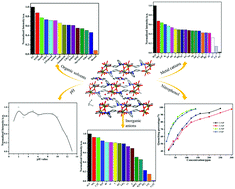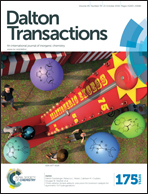A multi-responsive luminescent sensor based on a super-stable sandwich-type terbium(iii)–organic framework†
Abstract
A super-stable multifunctional terbium(III)–organic framework, namely {[Tb(TATAB) (H2O)2]·NMP·H2O}n (Tb-MOF, H3TATAB = 4,4′,4′′-s-triazine-1,3,5-triyltri-m-aminobenzoic acid, NMP = N-methyl-2-pyrrolidone) was synthesized. Tb-MOF exhibits a 2D sql structure with binuclear [Tb2(COO)4(H2O)4]2+ units as 4-connected nodes, and free water and NMP molecules are inserted between 2D layers through hydrogen-bonding interactions, forming a sandwich-type architecture. Observably, such a framework remains intact in a remarkable variety of environments such as common solvents and aqueous solutions with metal cations and inorganic anions, as well as with a pH ranging from 1 to 13. In particular, Tb-MOF can not only detect small organic molecules, metal cations and inorganic anions with high sensitivity and high selectivity, but also can accurately detect explosive 2-nitrophenol, 3-nitrophenol, 4-nitrophenol and 2,4,6-trinitrophenol in water. Its luminescence quenching response to Fe3+ and Cr2O72− ions can be explained in terms of the competitive absorption mechanism. In addition, the luminescence intensity of Tb-MOF is strongly correlated with the pH value in a pH range from 1 to 13. Thus, this material can be potentially used as a multi-responsive luminescent sensor.


 Please wait while we load your content...
Please wait while we load your content...